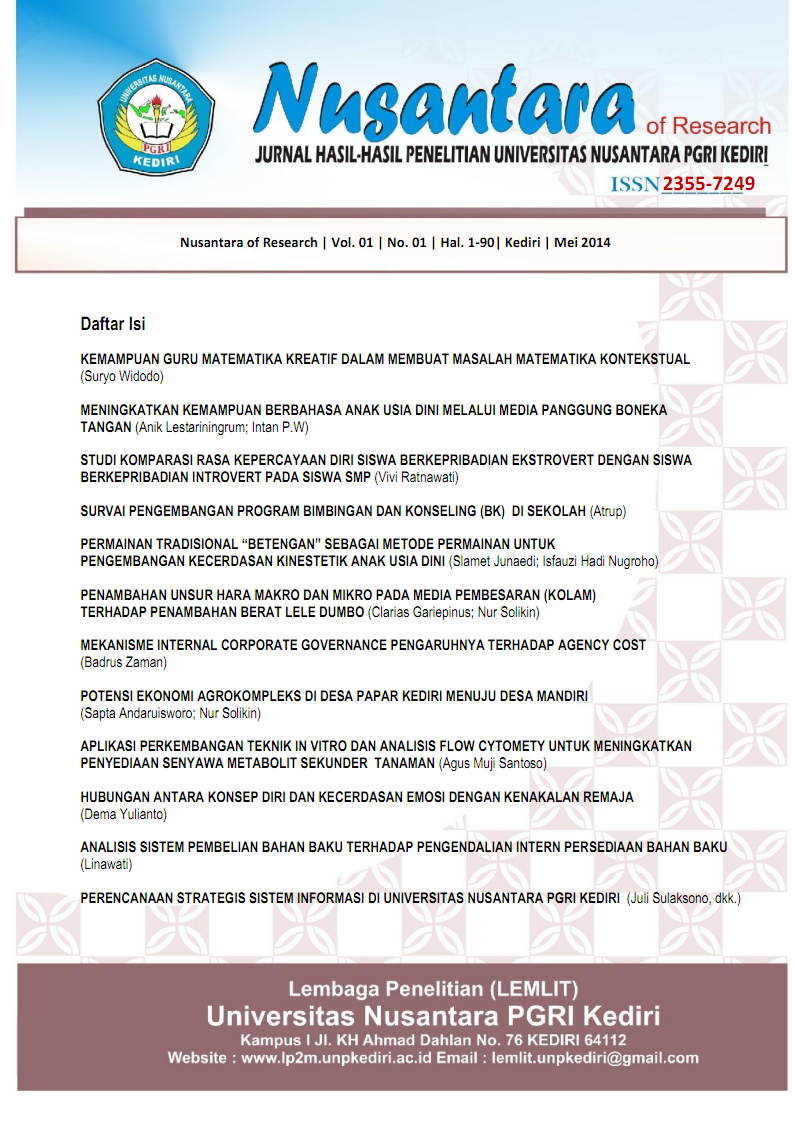SURVAI PENGEMBANGAN PROGRAM BIMBINGAN DAN KONSELING (BK) DI SEKOLAH
Main Article Content
Abstract
Paradigm shift in guidance and counseling (G&C) should be understood and implemented in development and programming G&C at school. But in reality, not all of the teachers understand and implement it. This study aimed to describe the types of development and forming models (patterns), also the reasons why G&C teachers (school counselor) choose the model. This was the survey research, the data obtained through document reports by students that surveyed on the implementation of the school counseling program. There were 22 reports which analyzed and the results were summarized as follows: (1) Many of G&C teachers developed and programmed G&C based on the pattern of 17 and 17+ (86.36%) and only slightly (13.63%) was based on Kerangka Kerja Utuh (KKU), (2) The reasons of using the pattern of 17 and 17+ was because they do not understand the concept, procedures and implementation of KKU models. It means they do not follow G&C paradigm well.
Downloads
Article Details
Issue
Section
Authors who publish with this journal agree to the following terms:
- Copyright on any article is retained by the author(s).
- The author grants the journal, the right of first publication with the work simultaneously licensed under a Creative Commons Attribution License that allows others to share the work with an acknowledgment of the work’s authorship and initial publication in this journal.
- Authors are able to enter into separate, additional contractual arrangements for the non-exclusive distribution of the journal’s published version of the work (e.g., post it to an institutional repository or publish it in a book), with an acknowledgment of its initial publication in this journal.
- Authors are permitted and encouraged to post their work online (e.g., in institutional repositories or on their website) prior to and during the submission process, as it can lead to productive exchanges, as well as earlier and greater citation of published work.
- The article and any associated published material is distributed under the Creative Commons Attribution-ShareAlike 4.0 International License




